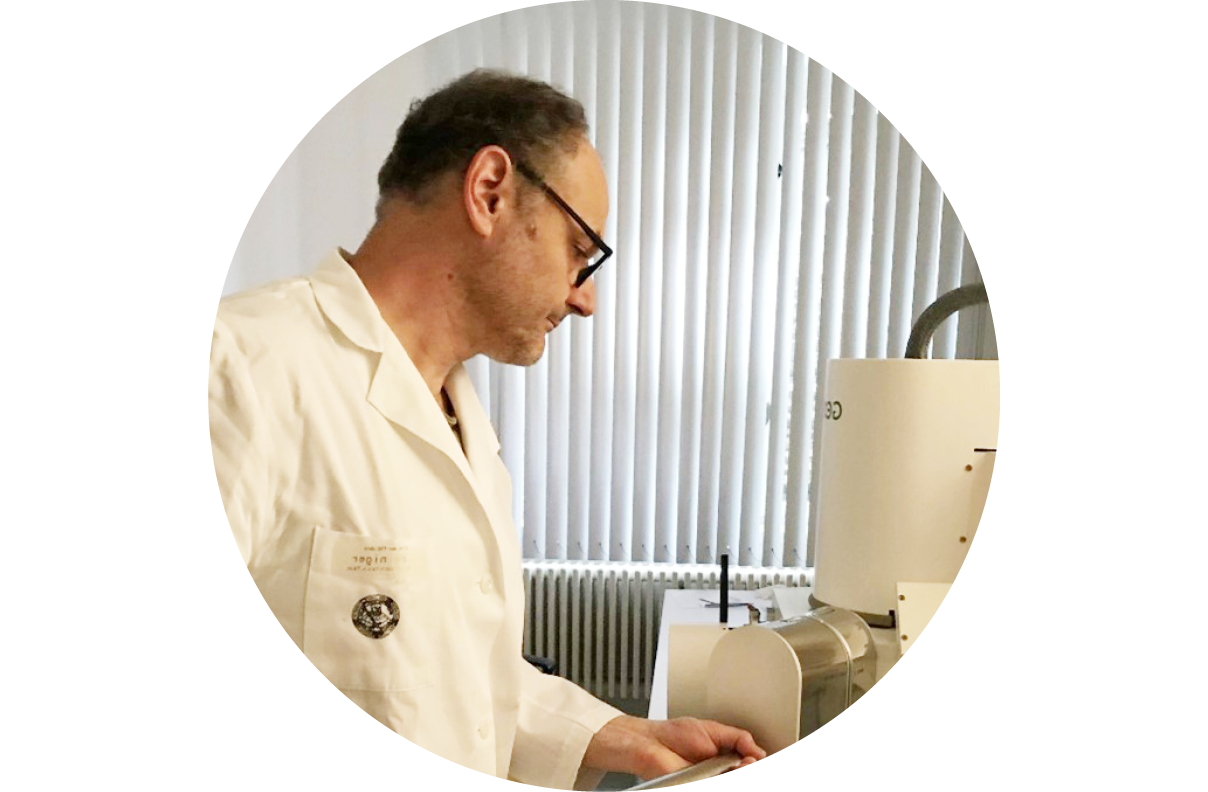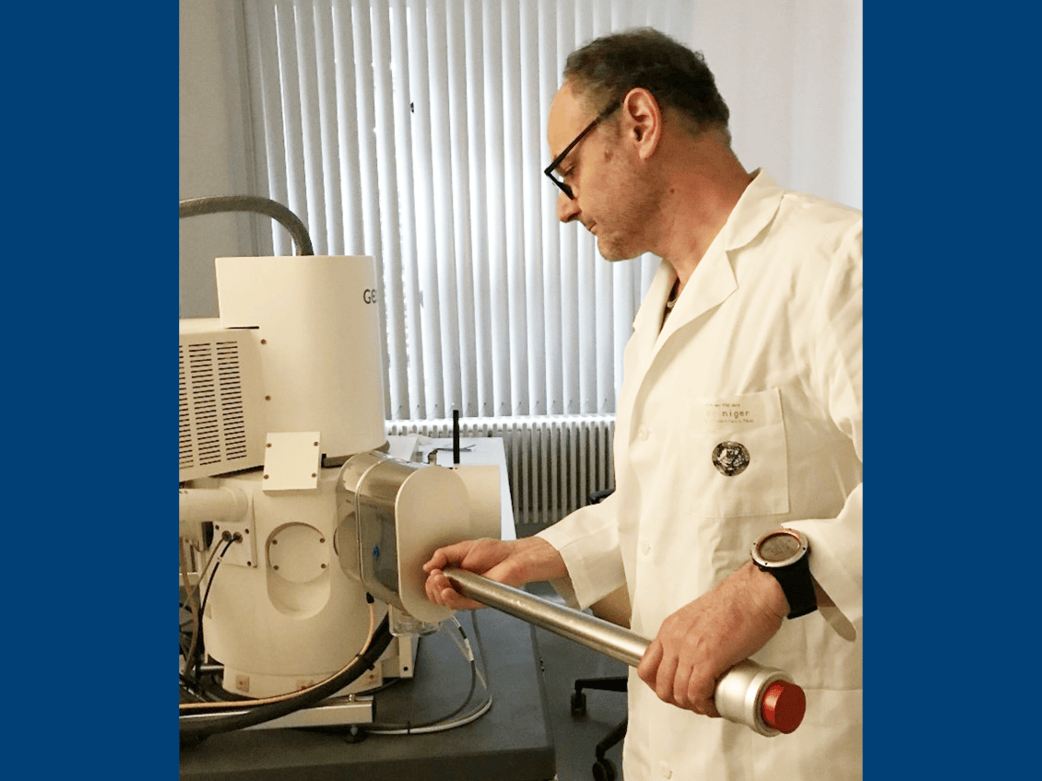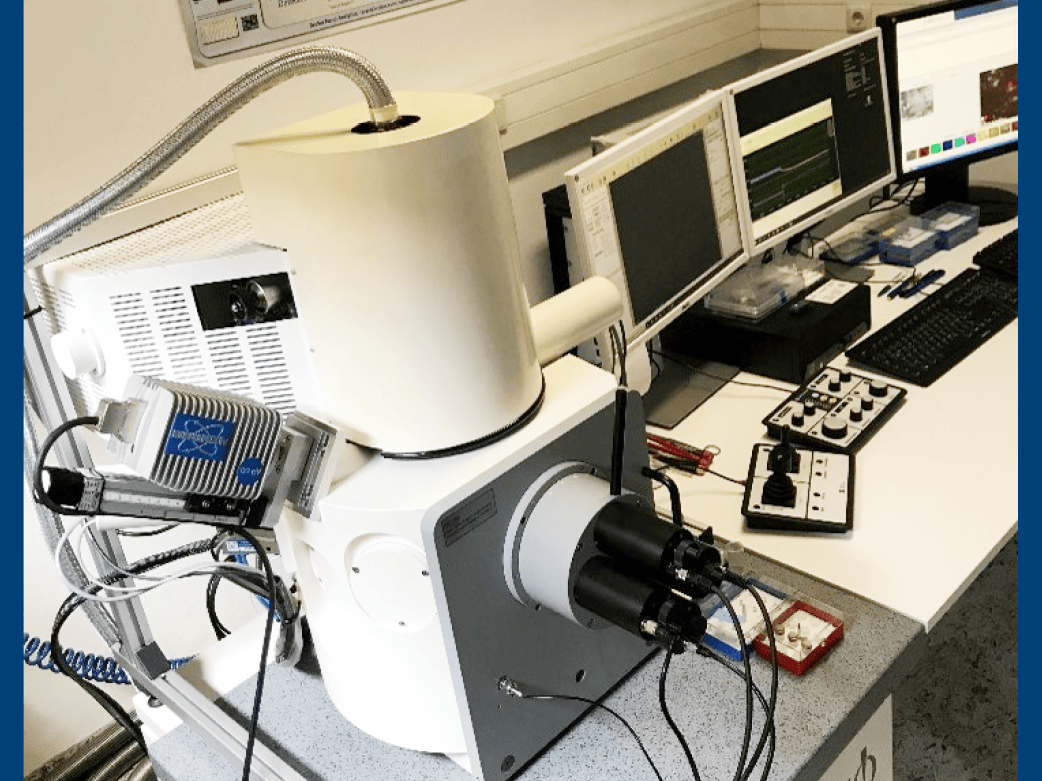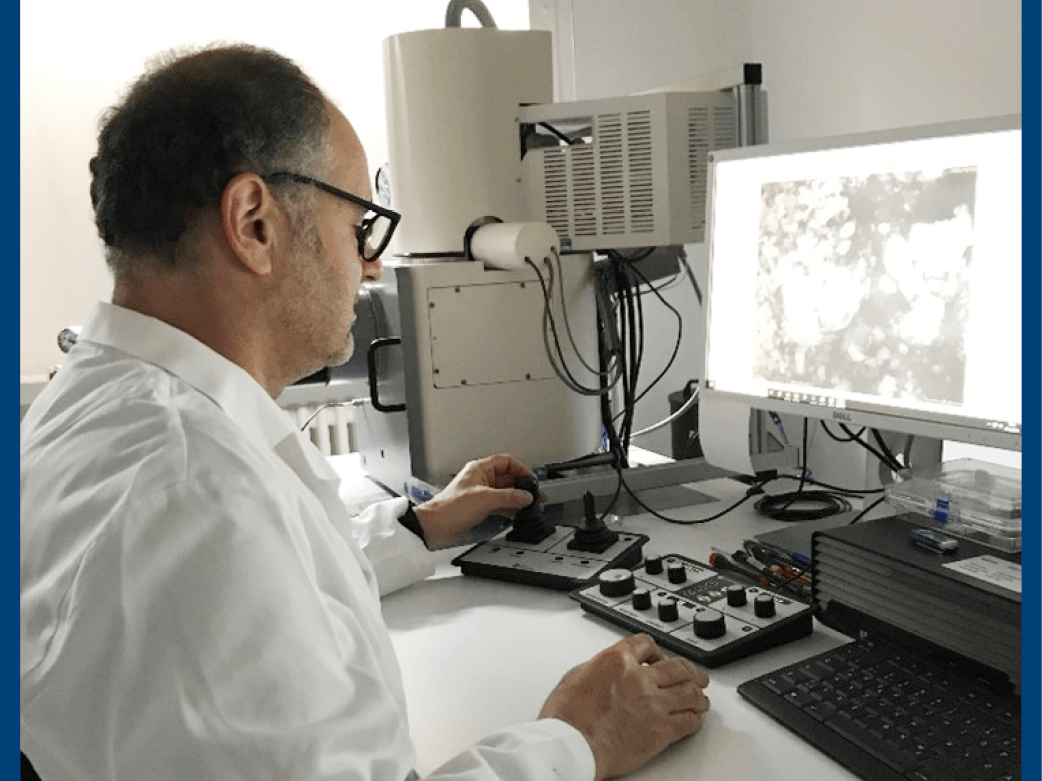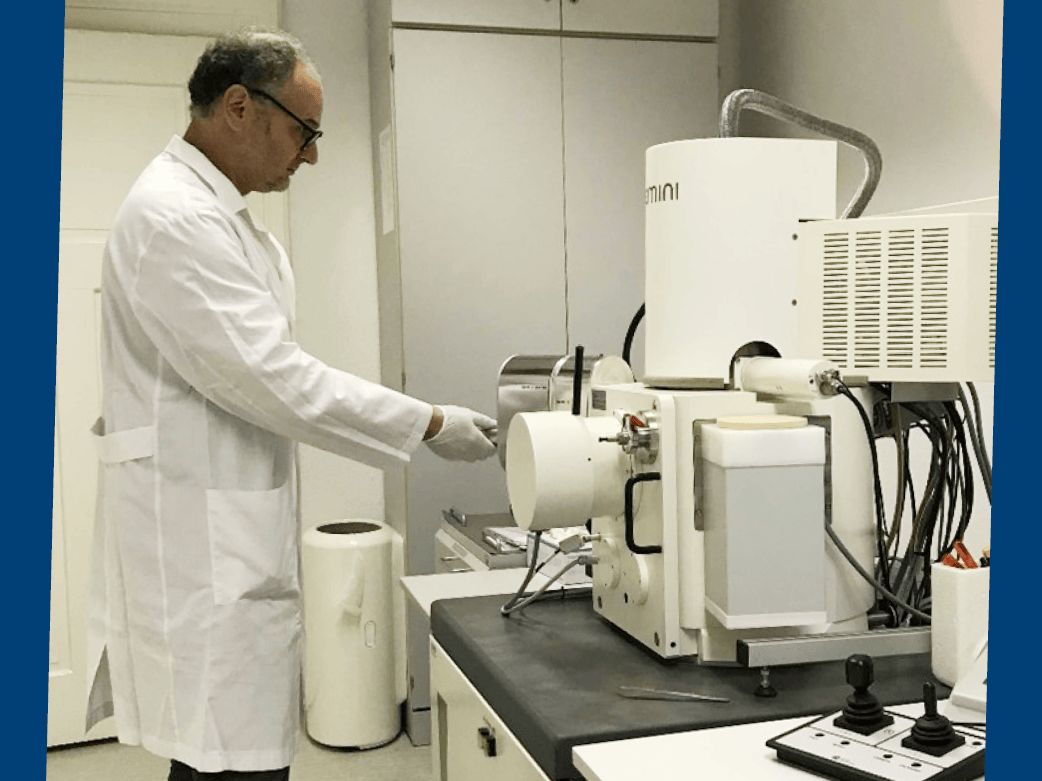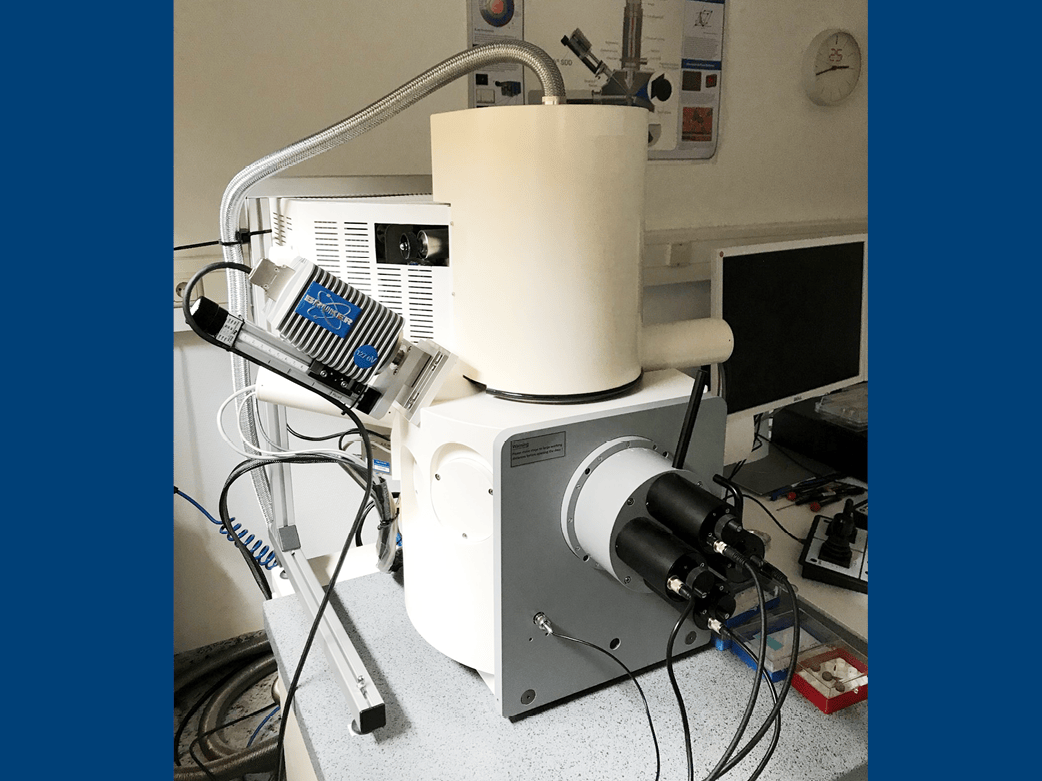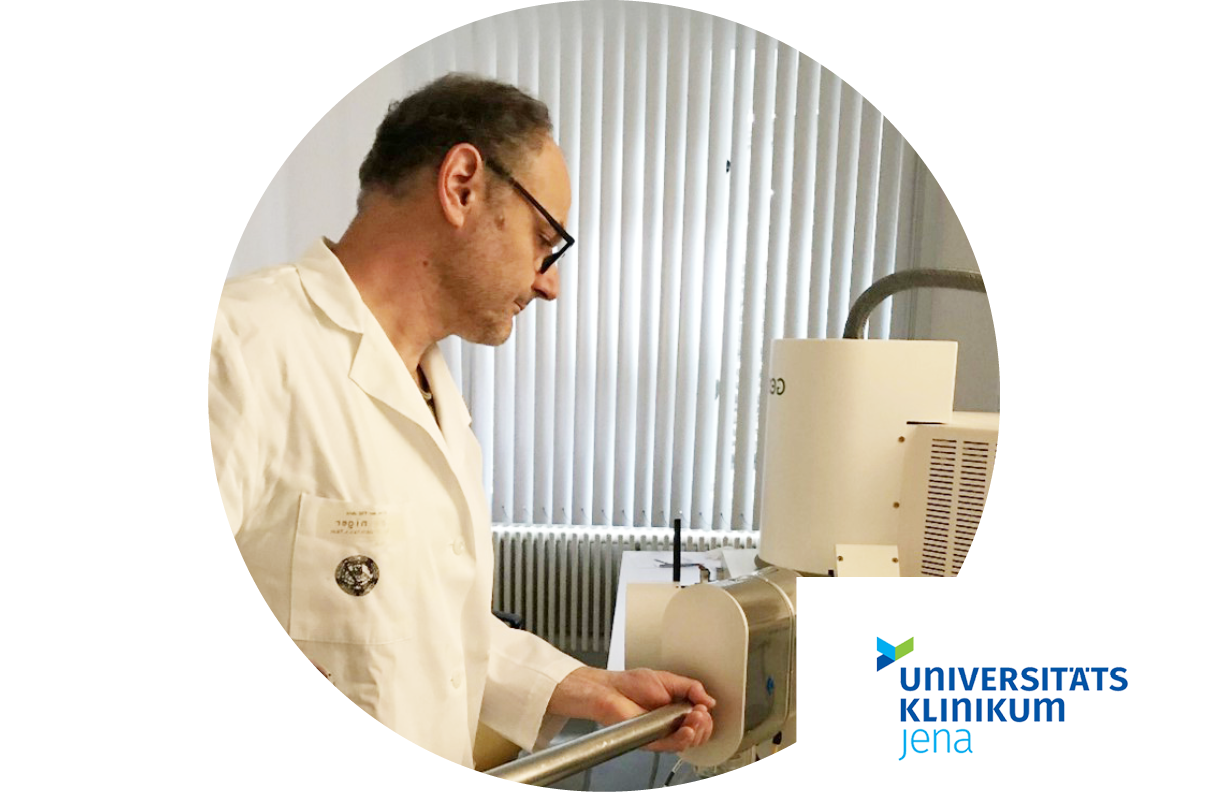SEM Modernization of a LEO DSM982 and a LEO Gemini 1530 for the University Hospital Jena
Questions to Frank Steiniger, Electron Microscopy Centre at Jena University Hospital
Can you tell us about your institution?
The Electron Microscopy Centre (EMZ) is a central facility of the University Hospital Jena (UKJ).
It enables all facilities of the UKJ and numerous other institutes at the Jena site to co-operate on electron microscopy topics.
Electron microscopy offers the unique opportunity to visualise cellular structures in their functional environment in nanometre resolution. For clinical and biomedical research, electron microscopic images are in many cases a necessary and informative supplement to molecular biological and biochemical research results.
Which applications do you use with the modernized microscope?
The SEM system was used to create high-resolution SE images and BSE images.
Biological samples: Insects, animal oak cells, bacteria, tissue, eye cornea, teeth, bones, etc.
Material samples: Nanoparticles, ceramic composites, carbon nanorods, bacterial nanocellulose, etc.
We are currently planning almost identical utilisation as before the upgrade. Thanks to the modernization, we now also have the option of integrating additional detectors into the evaluation system. The installation of a HAADF detector is planned as an extension, which will enable us to use the STEM method.
What are your experiences with the installation of the upgrade by point electronic?
The implementation of the upgrade was coordinated with us personally in advance. All work and adjustments to the special configuration were carried out within the agreed framework.
Do you have further experience with point electronic systems or services?
A Zeiss TEM EM900 upgrade from point electronic was installed in the EMZ 4 years ago. After installation, we immediately noticed a deterioration in the resolution. The very dedicated service technician was unable to rectify the fault despite checking all the relevant assemblies on site. An internal check of the error pattern ultimately revealed a circuit-related problem that had not previously been recognised. The relevant module was then redeveloped and promptly replaced.
The company point electronic proved to be competent and solution-orientated when solving the problem and working together.
